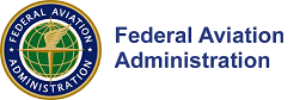The FAA has just published this synopsis of it various UAS initiatives.
Drone Advisory Council (DAC)
The purpose of the FAA‘s newly announced UAS Advisory Committee is to provide an open venue for FAA and key decision makers supporting the safe introduction of unmanned aircraft systems into the national airspace system. The Advisory Committee will be led by Intel CEO Brian Krzanich and FAA Administrator Michael Huerta will be the Designated Federal Official. Members on the Committee will work in partnership with the FAA to identify and propose actions to the FAA on how best to facilitate resolution of issues affecting the efficiency and safety of integrating UAS into the NAS. Membership will be comprised of a cross-section of UAS stakeholders that represent the wide variety of UAS interests — including industry, government, research and academia, retail, technology, etc. RTCA will assist the FAAwith the selection process. Final membership decisions will be made by the FAA. Interested parties should visit www.rtca.org for more details.
Test Sites
After a rigorous 10-month selection process involving 25 proposals from 24 states, the Federal Aviation Administration has chosen six unmanned aircraft systems (UAS) research and test site operators across the country. In selecting the six test site operators, the FAA considered geography, climate, location of ground infrastructure, research needs, airspace use, safety, aviation experience and risk. In totality, these six test applications achieve cross-country geographic and climatic diversity and help the FAA meet its UAS research needs.
Center of Excellence
The use of unmanned aircraft systems (UAS) in civil airspace raises many technical, policy and procedure questions. To better understand how the aircraft can be integrated into the National Airspace System, the FAA has selected Mississippi State University to lead a research team focused on the safe and successful UAS integration.
Section 333
The FAA has been working for several months to implement the provisions of Section 333 of the FAA Modernization and Reform Act of 2012, “Special Rules for Certain Unmanned Aircraft Systems,” which will allow for commercial operations in low-risk, controlled environments.
Pathfinder Focus Areas
The UAS Pathfinder initiative with industry will explore the next steps in UAS integration beyond the scope of the FAA‘s proposed Small UAS Rule.
UAS in the Arctic
Section 332 of the FAA Modernization and Reform Act of 2012 tasked the FAA with developing a plan to designate permanent areas in the Arctic where small unmanned aircraft could perform research and commercial operations.
- June 10, 2014 – FAA Approves First Commercial UAS Flights over Land
- September 23, 2013 – FAA Opens the Arctic to Commercial Small Unmanned Aircraft
- AFS-80 will provide white paper on second Arctic operation
- Arctic Implementation Plan (PDF)
UAS Roadmap
The first annual UAS Roadmap addresses current and future policies, regulations, technologies and procedures that will be required as UAS operations increase in the nation’s airspace. Integration of Civil UAS in the NAS Roadmap (PDF).
Source: FAA


“Special Rules for Certain Unmanned Aircraft Systems,” which will allow for commercial operations in low-risk, controlled environments.
Suggestions:
Rule 1..No pilots license required for commercial use of small light weight UAV, i.e, Yuneec Typhoon series DJI Phantom series, or other similar size and weight UAV’s.
Rule 2. No requirement to study Bernoulli’s Law or any other aerodynamic principal that pertains to fixed wing airplanes and has absolutely nothing to do with flying/hovering a small UAV over a parcel of land, structure, when giving permission by the property owner to do so.
Rule 3. Use common sense at all times while UAV is in the air.